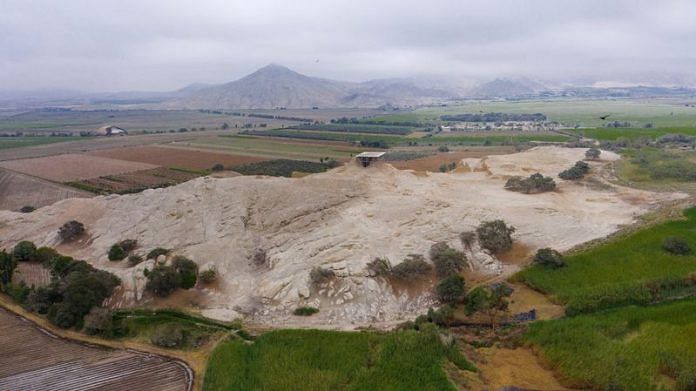LIMA (Reuters) – Archaeologists in Peru have uncovered evidence that could point to a woman ruling in a coastal valley during the ancient Moche culture more than 1,300 years ago, including a stone throne and unique scenes depicted in elaborate wall paintings.
The nature of the ancient murals “could indicate it was a woman who used the space, possibly a ruler,” said Jessica Ortiz, research director for the project at the Panamarca archeological site on Peru’s northwest coast.
The researchers found a pillared throne room lined with murals showing a powerful woman intertwined with sea creatures and representations of a crescent moon, sitting on a throne and receiving visitors. Evidence such as the presence of human hair and wear on the stone indicated that the throne was used by a person.
“The most exciting thing is the traces of wear,” said archaeologist Jose Ochatoma.
“There is not a surface in this area that is bare. Everything is painted and finely decorated with mythological scenes and characters,” Ochatoma added.
Ochatoma compared the room to the Vatican’s Sistine Chapel, whose ceiling bears biblical figures and scenes painted in frescoes by Michelangelo. The one in Peru, Ochatoma said, is “a place where they captured scenes belonging to the Moche ideology.”
Archaeologists believe the throne room dates from the 7th century AD, a time when the Moche culture occupied the coastal valleys of northwestern Peru.
The researchers discovered a nearby room overlooking a square they called the Chamber of the Braided Serpents due to a mural of a figure with legs intertwined with snakes, a motif that has not previously been uncovered. The room has other murals showing warriors, anthropomorphized weapons and a monster chasing a man.
“We are discovering an iconography that has not been seen before in the pre-Hispanic world,” Ochatoma said.
The discoveries were made at the Panamarca site near the Pacific coast, known for its colorful murals. The site is located more than 400 km (250 miles) north of the Peruvian capital Lima.
The Andean nation is rich in archeological sites, many dating back thousands of years. It was home more than 500 years ago home to the Inca empire that dominated swathes of South America’s highlands until the arrival of Spanish conquistadors in the 16th century.
(Reporting by Reuters TV; Writing by Sarah Morland; Editing by Brendan O’Boyle; Editing by Will Dunham)
Disclaimer: This report is auto generated from the Reuters news service. ThePrint holds no responsibilty for its content.



